.
A Token of Espousal
Sister Elisabetta Dardinelli Speaks Concerning the Token of Espousal
of Saint Catherine de’ Ricci (1522-1590)
Dixit mihi Dominus meus: Ne timeas, filia: Non rapiet te
quisquam de manu mea.
My Lord said to me: Be not afraid, daughter; no one will
take you from My hand. —Carmelite Breviary
All of us saw it but in different forms.
The index finger of the Saint’s left hand
Was marked with something where a ring might sit.
To some it was a hoop of gold; in place
Of stone and bezel, flesh protruded up
Like a small pea or bean. Some others saw
Unearthly radiance coming from that hand,
Or a raised ridge of flesh that formed a circlet
Around her finger. Sister Serafina
Saw a gold ring set with a pure white stone
Wherein her own reflection could be marked.
As for myself, a red discoloration
Seemed to surround her index finger where
It joined her palm, clear as a band of coral.
Catherine was embarrassed, and she kept
Her left hand out of sight, at least so far
As this was possible in our common prayers.
But none could stop the word of such a thing
From spreading. In a month the facts were known
By all within the convent, and without.
A token of espousal to a bride…
Jesus Himself had come to her in prayer—
A vision of Him and His Holy Mother.
They took her left hand; on the index finger
The Lord then placed a gold and diamond ring
As a bridegroom might, addressing Catherine thus:
I give thee this in token that thou art
My spouse forever, and in token that
The Tempter shall not lead thee into sin
Of any sort, by any means or manner.
It melded with her hand. When others asked
About the sign, she was discomfited,
And only answered with great hesitation:
I cannot tell what your eyes may behold
When they look at this hand. But as for me
I see it plain as that first holy moment—
A gold ring with a diamond, lozenge-shaped,
Set in a bright red bezel. Nothing more.
It never leaves my hand, and now it seems
A part of my own finger. I have prayed
That it not be the occasion of false pride
Or scandal to our sisterhood. Therefore
I keep it in my habit’s folds, unseen.
More than this I cannot say. They took
My deposition, those of older sisters—
We few who still survive from Catherine’s time.
But there were many others, now departed,
Who could have added to the testimony.
What matter that we saw it differently?
The ring was but a symbol of Christ’s love
For His bride: all the Church and all her members.
And every member of that Mystic Body
Sees the espousal in a unique way.
Perception suits one’s knowledge, state, and grace:
The many mansions in our Father’s house.
.
Postscript
Sworn testimony of eyewitnesses to the Token of Espousal of Saint
Catherine de’ Ricci (Positio super Virtutibus, 1614):
“…a hoop of gold, but in the place of the bezel a protuberance in the
flesh of the finger.”
—Sister Dorothea Vecchi
“…a livid mark round the index finger of the left hand,”
—Sister Maria Maddalena Ricasoli
“…a ring on the index finger of the left hand—at least it had the form
of a ring, but appeared to be entirely of flesh raised up like a ridge.”
—Donna Isabella de’ Bonsignori
“…an extraordinary radiance coming from one finger of the Saint’s
hand.”
—Sister Angela Arrighetti
“…a ring of gold, very dazzling.”
—Donna Dianora de Salis
“…a red circle round the ring finger.”
—Sister Elisabetta Dardinelli
“…a gold ring with a brilliant white stone, so that I could see myself
reflected in it.”
—Sister Serafina Baroncini
“…a fold in the flesh of the finger in the shape of a ring.”
—Sister Serafina Strozzi
Closely akin in some respects to the phenomenon of stigmatization, but in other features very different, the spontaneous appearance of a miraculous ring upon the finger of certain virgins of holy life is not infrequently mentioned in hagiographical records. In nearly all such cases the outward manifestation is preceded by an ecstasy in which the soul thus favored believes herself to have gone through some sort of mystic espousal with Christ our Saviour.
—Father Herbert Thurston, S.J., “Tokens of Espousal,”
in The Physical Phenomena of Mysticism (London, 1952)
.
.
Joseph S. Salemi has published five books of poetry, and his poems, translations and scholarly articles have appeared in over one hundred publications world-wide. He is the editor of the literary magazine TRINACRIA and writes for Expansive Poetry On-line. He teaches in the Department of Humanities at New York University and in the Department of Classical Languages at Hunter College.



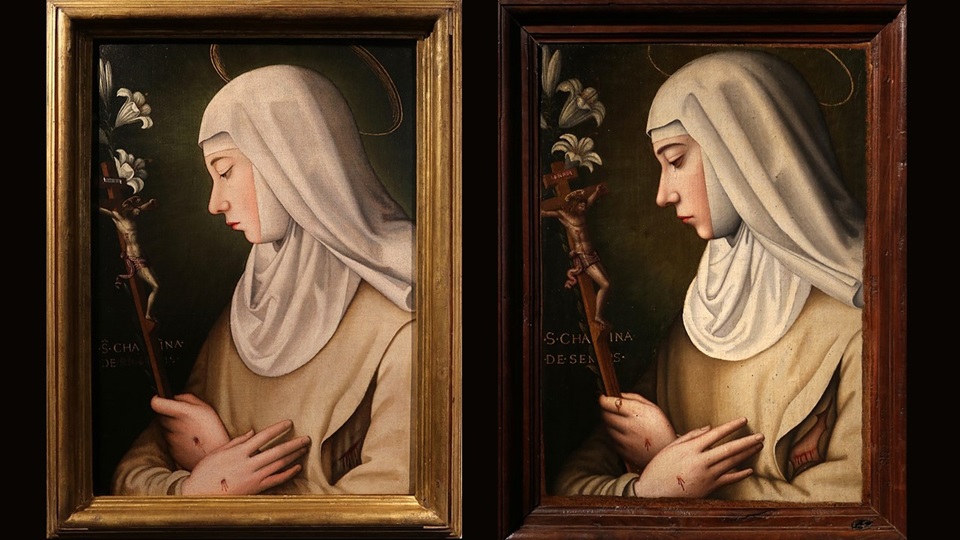
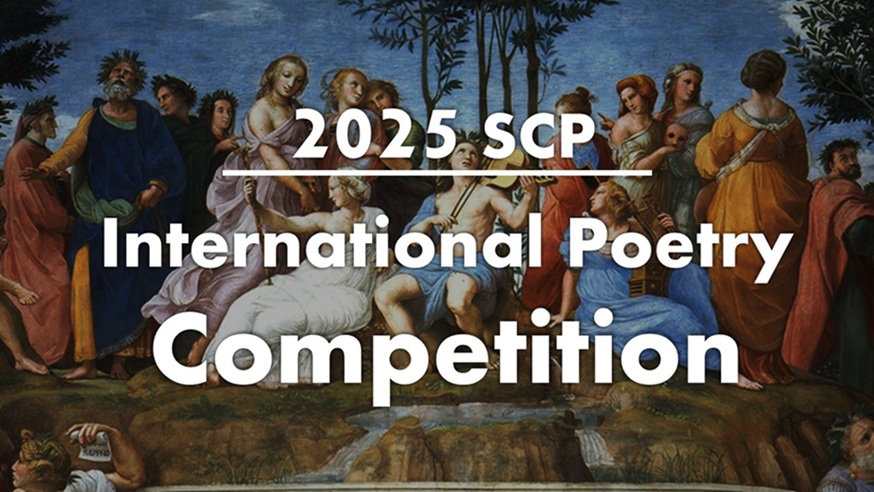

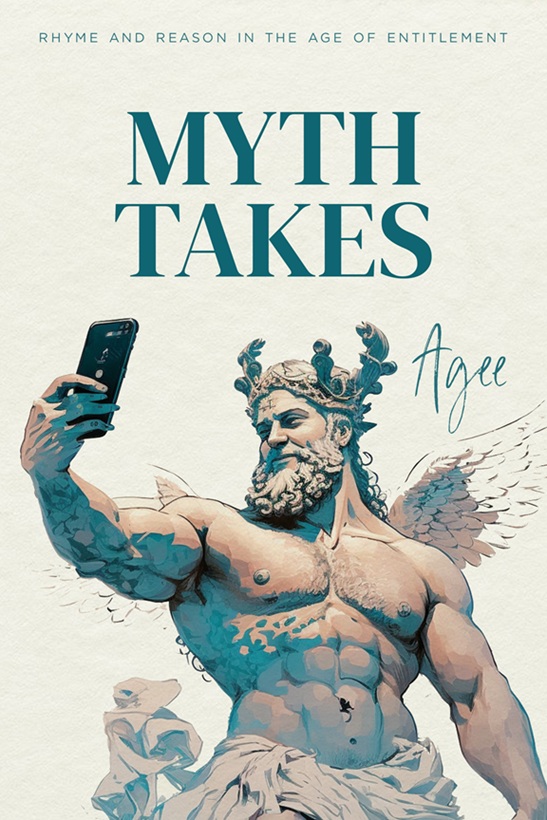
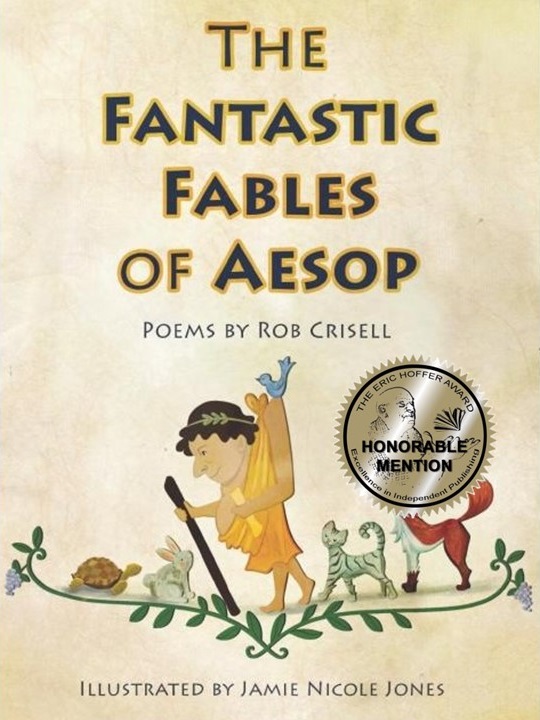
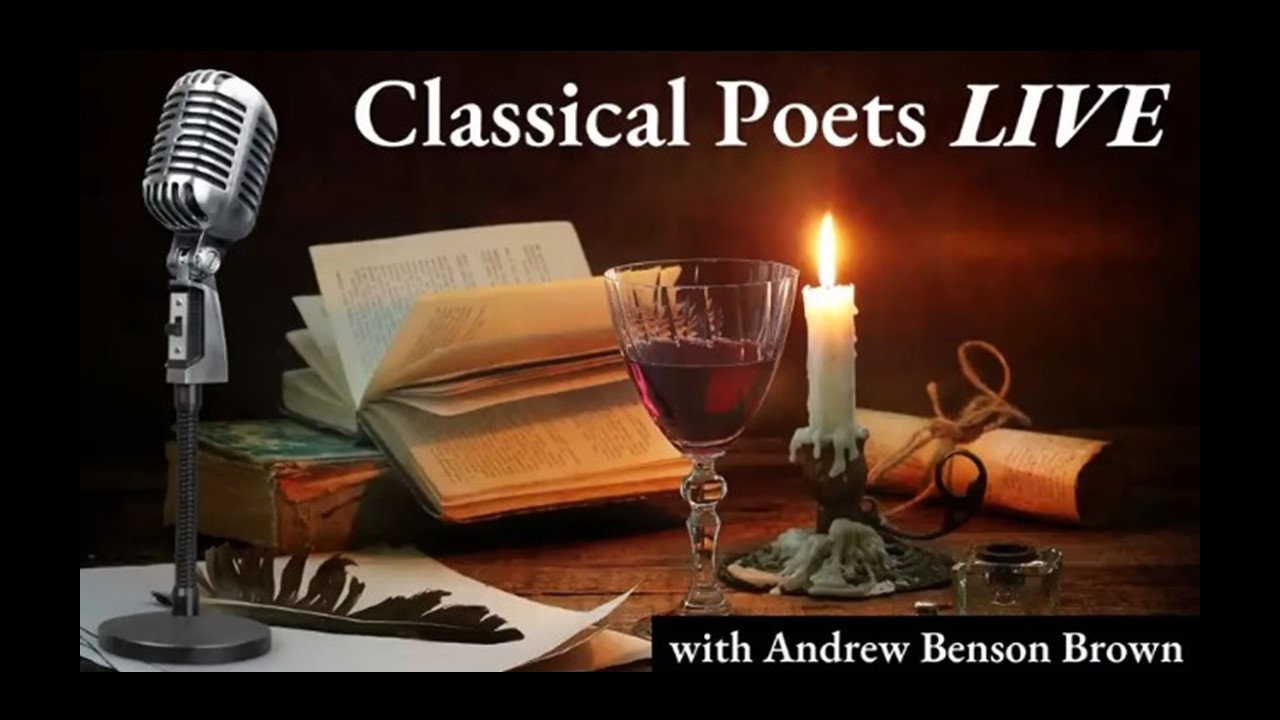

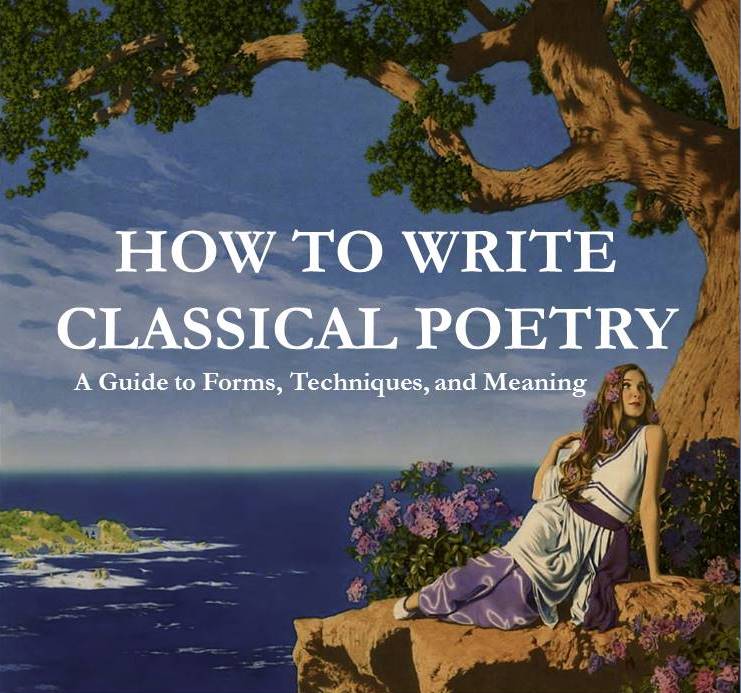




Excellent crafting, a pleasure to read. This poem challenges the secular smugness which dominates our society and, sadly, shapes the thinking of many Christians. Including the historical documentation was important. T. M.
Fascinating documented eyewitness accounts with varying perceptions of the nature of the perceived ring. I admire the research that went into this and the focused ability to vividly portray the results.
This poem is beautifully done and the information is stunning. I am familiar with stories of the stigmata, but this is compelling because everyone saw the ring so differently.
We’re basically just dirt and God’s breath… a mixture of the physical and the spiritual. I recently saw an amazing video. It revealed the billions of little workers in our DNA keeping everything running. The video was all science, but I couldn’t see anything except the hand of God at work.
Joe, your poem and this story speak of that wonder. It’s the truth of God mixing the mere physical with the truth, the hard reality of the spiritual. The fact that everyone saw it their own way says even more about Gods’s power and our individuality.
It’s all bigger than we can wrap our heads around. There is so much going on we can’t see, but sometimes we can catch a glimpse of eternity.
To T.M., Roy, and Mike —
Thank you all for your kind comments. If there was one especial thing that drew me to the subject of this poem, it was the incarnational aspect of my religion. And when I think about the massive and ongoing deformation of religion today, I see that it is due to the liberal notion that religion is simply a collection of ideas, no different from philosophy or political ideology.
Very fascinating, very informative.
Thank you, James. Those are two qualities that I strive for in my poems.
Well, that is a very beautiful poem on a marvellous subject. Thank you!
A saint, an encounter, and its memorial marking I was unaware of, all compellingly described. Your allusion to Christ’s image of “many rooms” is on the money, Joseph. I compare your description to the reaction of the Jews to the apostles on the day of Pentecost, the astonishing range of experience known from Marian apparitions etc.
To Julia and Julian —
Many thanks to you both. The phenomenon of stigmata is widely known, in our day primarily because of the well-documented case of Padre Pio. Other manifestations of divine favor, such as the espousal ring, are obscure and unfamiliar.
The tale itself is beautiful, but retelling in meter and verse just enriches it. Thanks Joe for doing this. A good reflection at the beginning of Lent.
An engaging, well-researched piece of poetry, with an appropriate post-Medieval-Renaissance mystical feel to it.
Thanks for the read.
To Robert and Paul —
Thank you for your kind observations. I must admit that it was Father Thurston’s book that first drew my attention to the varied forms of mystical phenomena. Unfortunately it has been long out of print. Bi-location and hyperthermia, both of which have been abundantly attested in the case of Padre Pio, seem also to have been noticed in the case of St. Catherine.
A most intriguing poem, Joseph, seeming to outline the deposition of Sister Elisabetta, including a description of the mystical marriage as she had heard it from Catherine, and then her own interpretation of differences in perception of the ring. That interpretation provides the reader a way to expand the reflection you set forth. You move toward the larger question you propose in writing the poem–the incarnational nature of religion. Why do some easily perceive this (or see more of it) than those to whom ideas and philosophies constitute the spiritual realm? Everyone sees it in his own way, depending on “knowledge, state, and grace”–or is oblivious to it. Or so run my thoughts. In the poem and note, the sister witnesses (and some ladies who may have been their guests or visitors) all inhabit a similar religious state, yet would have different knowledge and grace, thus accounting for the wide variety of perceptions in the limited area of the convent.
For currently available popular books on this kind of thing, there’s no author better than Joan Carroll Cruz, a Louisiana native and Third Order Carmelite who made a career of writing about devotional topics that qualify as “incarnational.” Most of her books broadly cover a topic such as relics, angels and devils, miraculous images, Eucharistic miracles, and so forth. But in the compendium “Mysteries, Marvels, and Miracles in the Lives of the Saints,” she has a chapter on “Mystical Marriage and Heavenly Jewels.” Along with many women, she cites Saint John Vianney as one man who experienced such a marriage and had a ring attested to by himself and a couple of witnesses. He’s also the most recent instance Cruz knows, from the middle of the 19th century.
Yes, I know of Joan Carroll Cruz’s work, especially her book “The Incorruptibles.” She has done a great deal of research in material of this sort.
In the list of witnesses to Catherine’s ring of espousal, most are sisters of her order, but the women with the title of “Donna” are married laywomen — probably visitors or devotees, as you suggest.
To answer your question, some persons simply will not credit even what they see if they have been trained in a rigorously materialistic and secular worldview. In fact, they will deny the possibility of incarnational evidence of religion simply on preconceived notions about what is or is not possible. The most they will concede is that something “has not yet been explained,” or “has so far escaped thorough scientific scrutiny.”
When Padre Pio was drafted into the Italian army in 1916, the examining doctor at his physical took the man’s temperature. The doctor looked at the thermometer, which registered a temperature of 118 degrees. He turned to his assistant and said “This thermometer is defective. Dispose of it and bring me another.” When the new thermometer also registered 118 degrees, the doctor said “This is impossible. No human being could survive with a temperature of this intensity.” In other words, the examining doctor would not believe his own eyes, or his instruments. And yet Padre Pio had this sort of hyperthermia frequently, along with his stigmatic wounds, which no physician could explain or treat, even when examining them closely.
Unfortunately, many modern clergy of all denominations do not take an incarnational view of religion, and instead imagine that their faith is in words and ideas and concepts rather than in flesh. The entire push of modernism in our church, from its very beginnings up to Bergoglio, is to replace incarnational reality with philosophical and political abstractions.
The poem is a dramatic monologue, and it presented the following difficulty. It is in the voice of Sister Elisabetta, but she also quotes the voices of two other persons: first Christ, and then Sister Catherine. I had to set off what they said in italics, and indent it, in order to keep clear what was happening.
There is one small error in the presentation of the poem’s text. There should be no line space between
Jesus Himself had come to her in prayer —
and the line that follows it.
Perhaps Mike Bryant will fix this small error.
Thank you, Joe! A fascinating piece of culture and history I was unfamiliar with. It reminded me of the levitating monk Joseph of Cupertino:
https://en.wikipedia.org/wiki/Joseph_of_Cupertino
Yes, levitation, ecstatic visions, and “the odor of sanctity” are also mystical phenomena, in addition to stigmata and the ring of espousal. In fact, Padre Pio was almost always in a state where this odor of sanctity hung about him, his monastic cell, and his clothing, and it was noticed by countless persons, both clergy and lay. This odor was described as a sweet and pleasant floral bouquet, but like nothing earthly.
I experienced Padre Pio’s “odor of sanctity” about 30 years after his death. A visitor to a chapel where I used to attend Mass had obtained one of his gloves, soaked in blood shed by the wounds in his hands. The scent, so very long after the blood had dried, was similar to that of a gardenia, but rather eerie because it was more “discreet,” gradually filling the air but never overwhelming the senses of persons present.
This is a fascinating and inspiring dramatic monologue, Joe – well-crafted and a compelling testimony which is also the springboard for a meditation both on the existence of a miracle and how it is perceived/received. You are explicit about this latter subject of “perception” in your insightful closing two lines: “perception suits one’s knowledge, state and grace:/The many mansions in our Father’s house.” This is something of an invitation to explore the frontier between subjective and objective. We know that the phenomenon exists but what does it mean? To some degree it is in the eye of the beholder. But that has a limited domain of validity. Objective reality exists – and yet the human factor looms large. We don’t always perceive reality in the same way.
One of the first things that came to mind for me with this poem is the legal aspect of it. This is a legal proceeding. It is within the context of the Church, but that does not reduce the burden of proof or the need for multiple witnesses. In most states in the U.S. juries are instructed on the phenomenon wherein multiple witnesses are likely to view the same incident differently and remember it differently. It is not to be assumed that anyone is lying. It is just that one person may see a red car going 30 miles per hour and another person may see a brown car going 40. The fact that the witness statements don’t line up exactly is actually an indicator of reliability rather than an undermining. It means they did not compare notes and rehearse a script. From a sacred standpoint, the ultimate example is probably the four gospels which corroborate each other for the most part but in which details are different – especially John. Your poem actually turns this phenomenon into a great virtue for it makes the likelihood of this miracle that much more compelling.
I love the structuring of this poem. First of all, you and I are both great fans of the dramatic monologue form and you handle this form with great confidence and creativity. Your use of blank verse is superb and was absolutely essential to the subject matter – for you to use rhyme after rhyme here would not only have cloyed – it would have made the expression of different points of view impossible. Your quotation of Catherine works perfectly in this format. In fact, your poem overall is a fine example of when and where to use blank verse – a poetic tool which I personally find underused on this site and in general in modern Classical poetry. Blank verse offers so much flexibility and yet taps into the Tradition beautifully. We must not forget that Shakespeare, Milton, Wordsworth, Eliot, Yeats and many others wrote immortal works in this form.
Joe, you said in a comment on my Venetian Doge poem that a dramatic monologue in which the speaker is “a paragon of kindness, wisdom, good nature, piety and politeness… would bore the hell out of us. You have proven yourself wrong as you have written in not one but two voices (with additional quotes) of exceptional faith and virtue in a poem which is anything but boring. In fact, I find it rather thrilling as we explore the mysteries which attend an authentic miracle.
Thank you for these very perceptive comments, Brian. Yes, I did say that about the speakers in dramatic monologues, and I probably overstated my case because of my preference for poems that are spicy and exciting. But you are correct — here my speaker is an old nun of exemplary piety, and she speaks in a calm, legal-deposition way about her personal remembrance of a saint, and about the remembrance of others. And by quoting both Christ and the saint herself, Sister Elisabetta adds extra voices to her testimony. Your lawyerly eye caught all this!
Your point about small variations in witness testimony on a subject being a kind of general confirmation of the truth of a matter is very important. I myself noticed that all the quoted witness testimony in the “Positio super Virtutibus” describes the ring as being on Catherine’s index finger (“digitus index” in Latin), except for one sister, who speaks of it being on the saint’s ring finger (“digitus anularius”). This might be due to the hazy memory of an old nun, or simply because the “ring finger” in Italy in 1614 might refer to any finger that carried a ring, and not just to the finger next to the pinky. But the general concordance of all the testimony about something extraordinary happening on the hand of Catherine De’ Ricci stands firm.
You’re right about the blank verse. I had to use it in a poem of this type. And I do think that too many formal poets have an unwarranted prejudice against it, as if rhyme were absolutely required in all cases. In some poems the subject matter is so important that you need the word-choice freedom that blank verse allows.
This poem is a most enjoyable way to learn about this fascinating topic of which I had never heard before, thank you very much! The 2 pictures showing the same portrait with subtle differences are nice too. Your poem serves to reaffirm the notion that Christianity is not about what we know, but who we know, which makes the eternal difference in every individual believer’s life. Great work!
Thank you, Yael. One thing never to forget is that some of the incarnational signs of divine favor, like stigmata or the espousal ring, are accepted by those who receive them as difficult burdens. Padre Pio suffered all his life with the pain and inconvenience of the stigmata and hyperthermia, but he accepted them as the will of Christ, to Whom he was deeply devoted with personal closeness and intimacy.
I have thoroughly enjoyed the wonder of your beautifully wrought poem and the rich and varied comments beneath. Your shining words sing to me of the spiritual aspect of our lives… a fact that is increasingly significant to me as time goes on. Joe, thank you!
Many thanks, Susan. I’m glad the poem has pleased you.